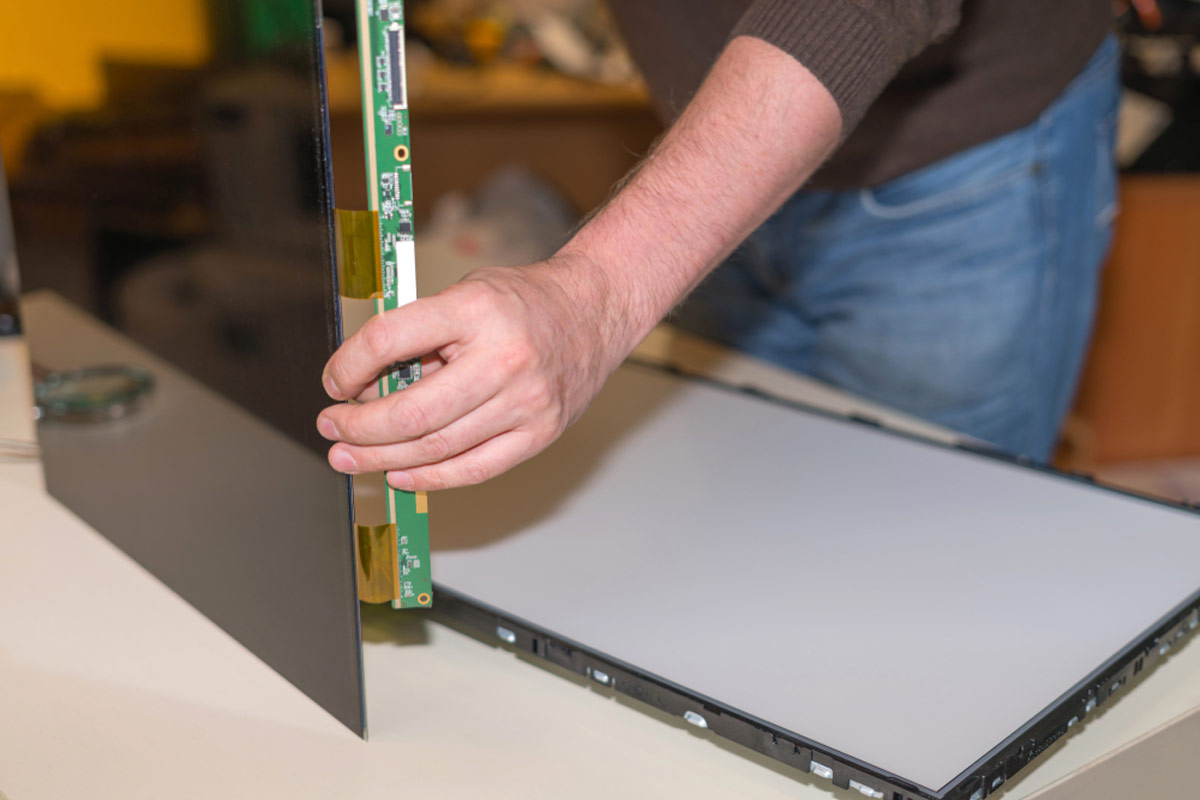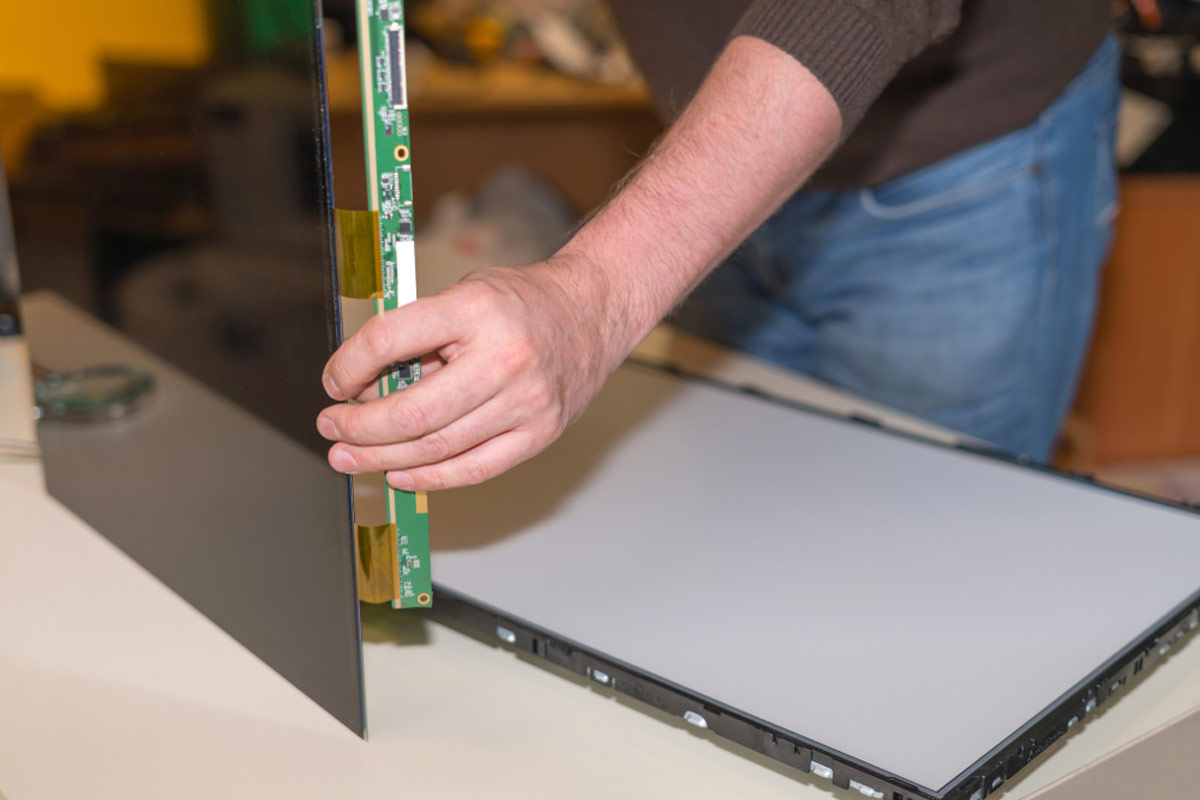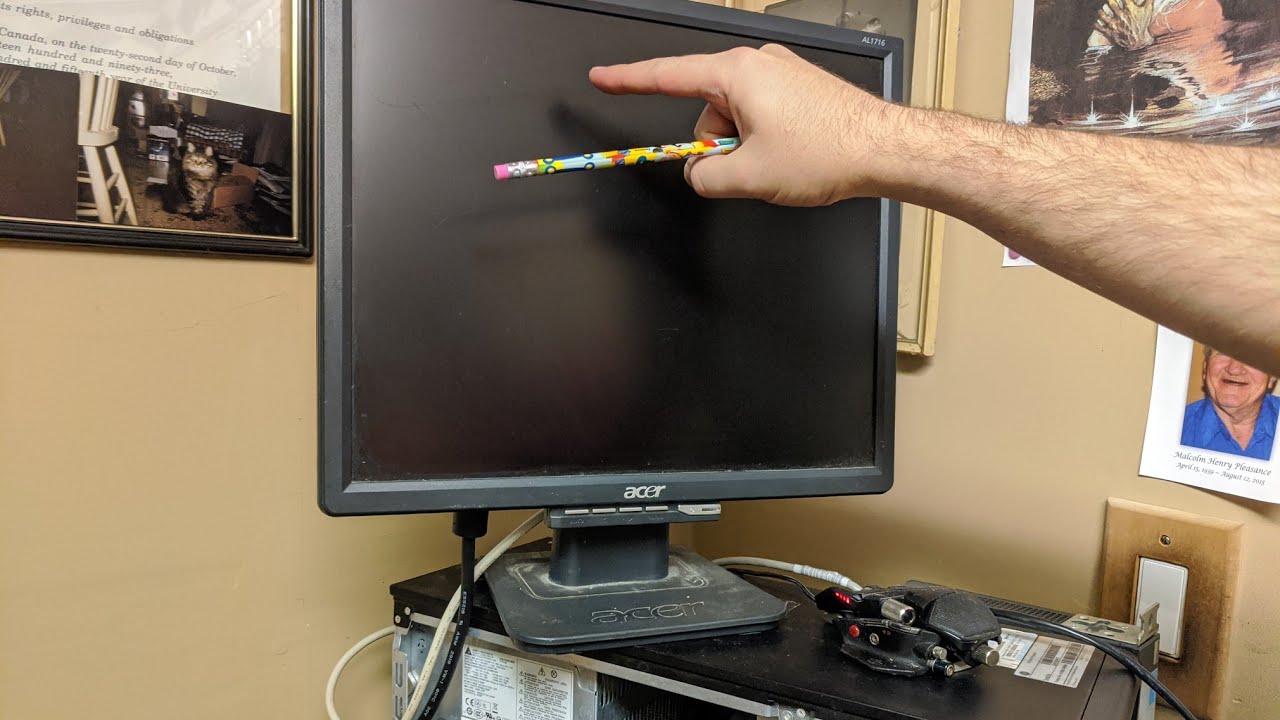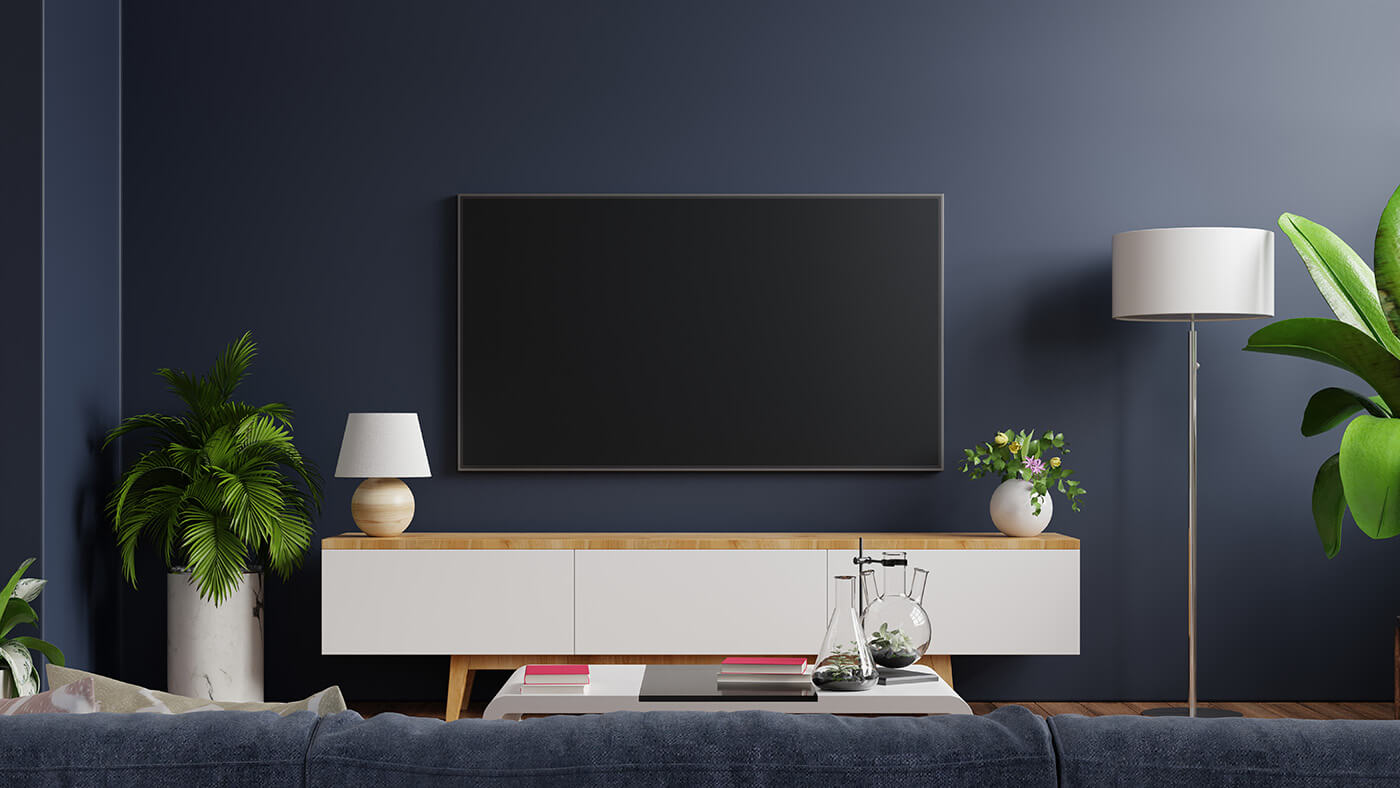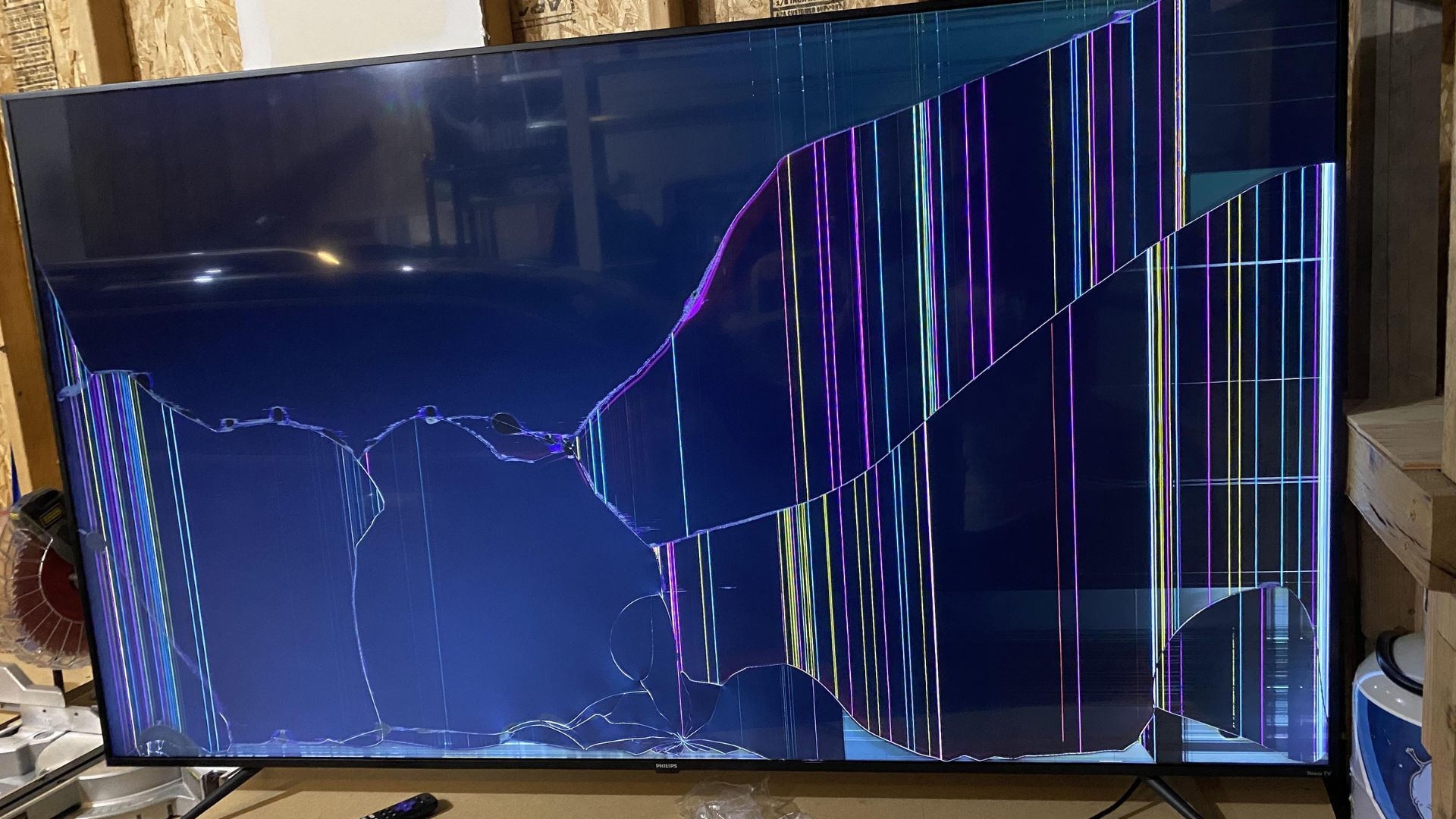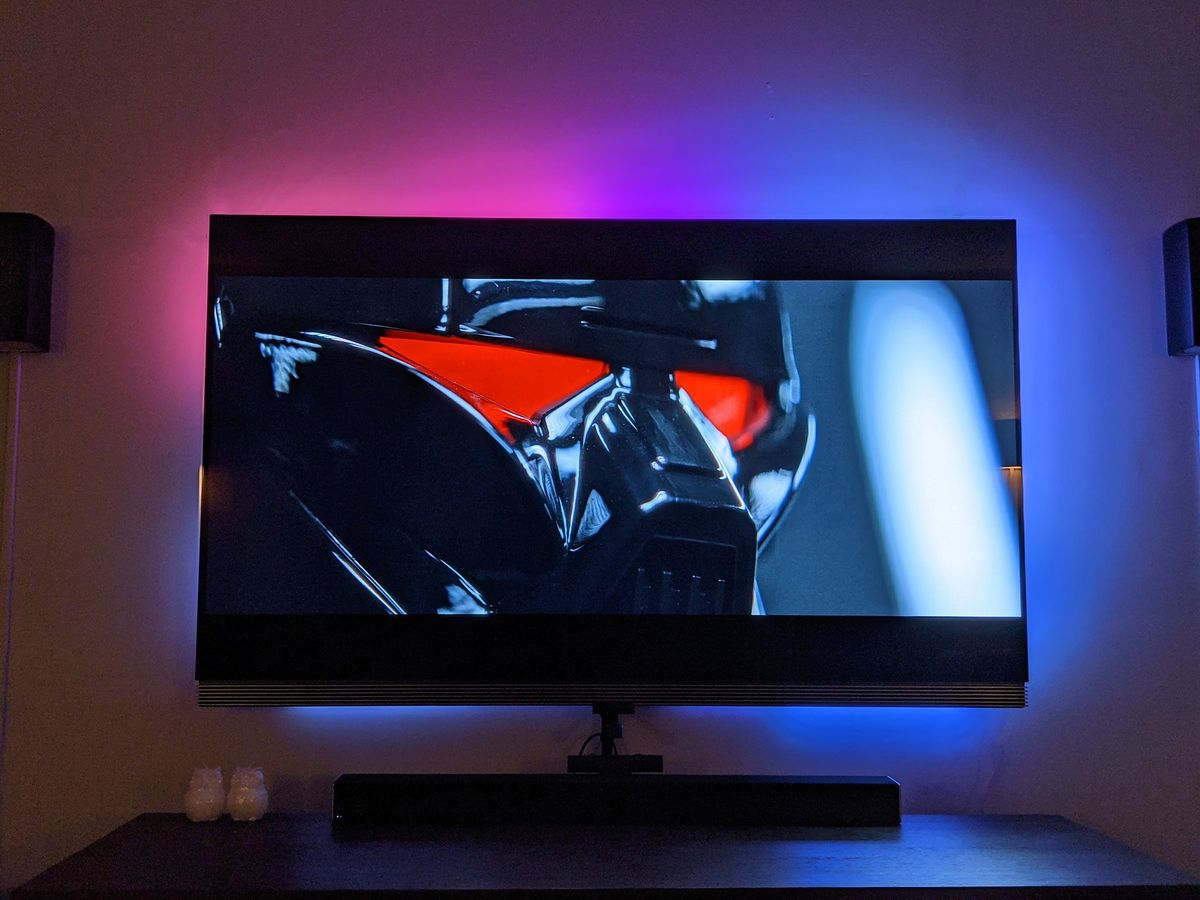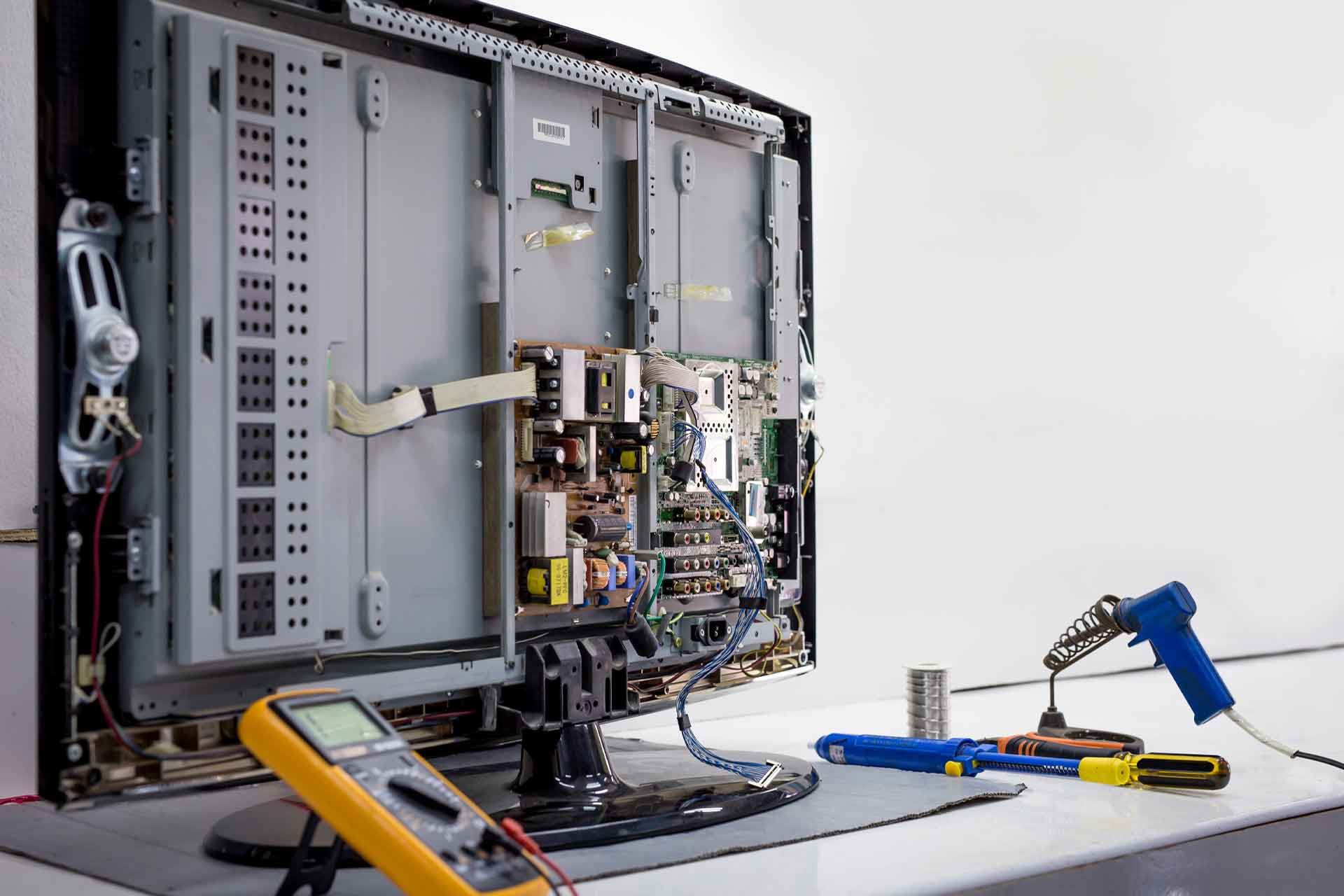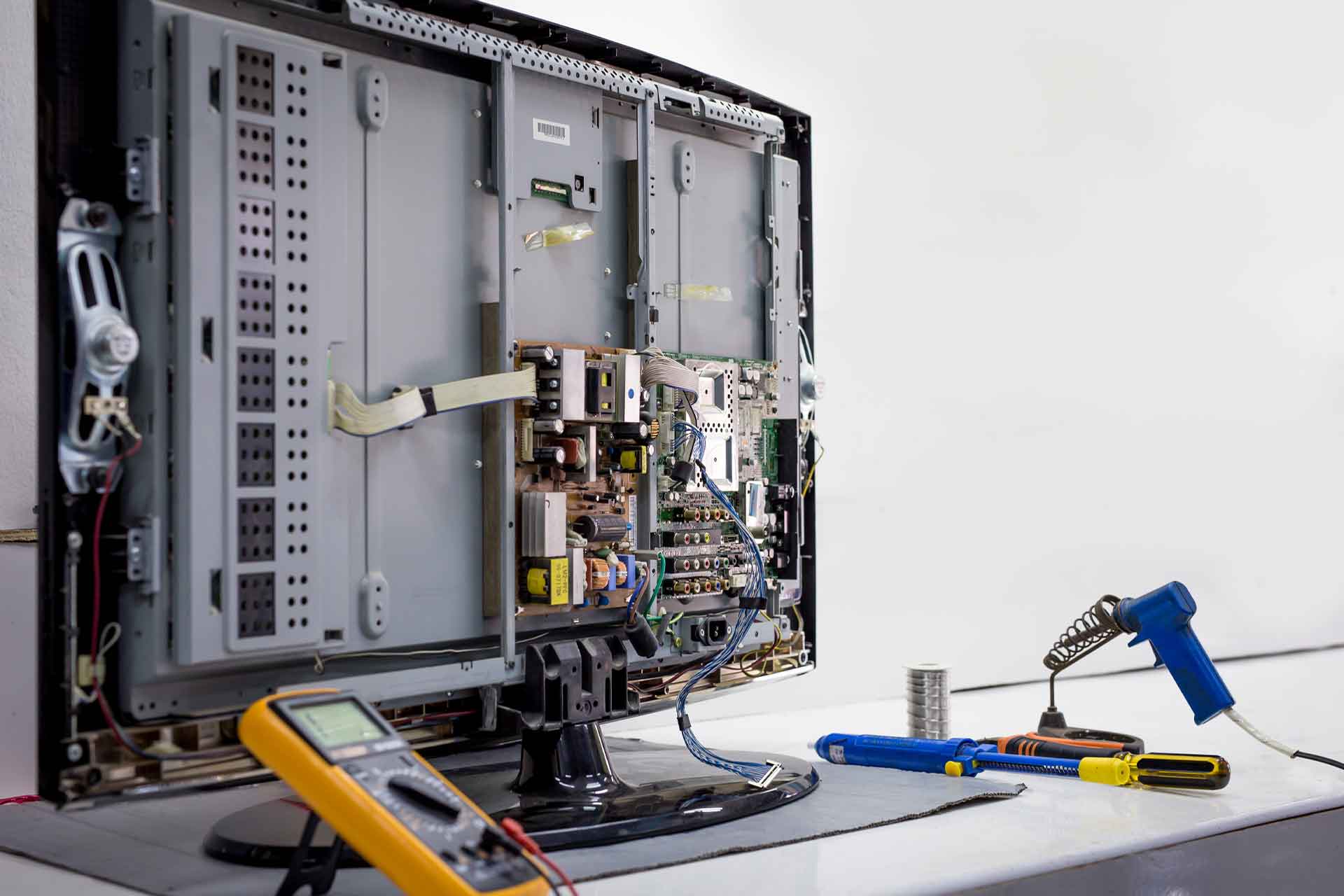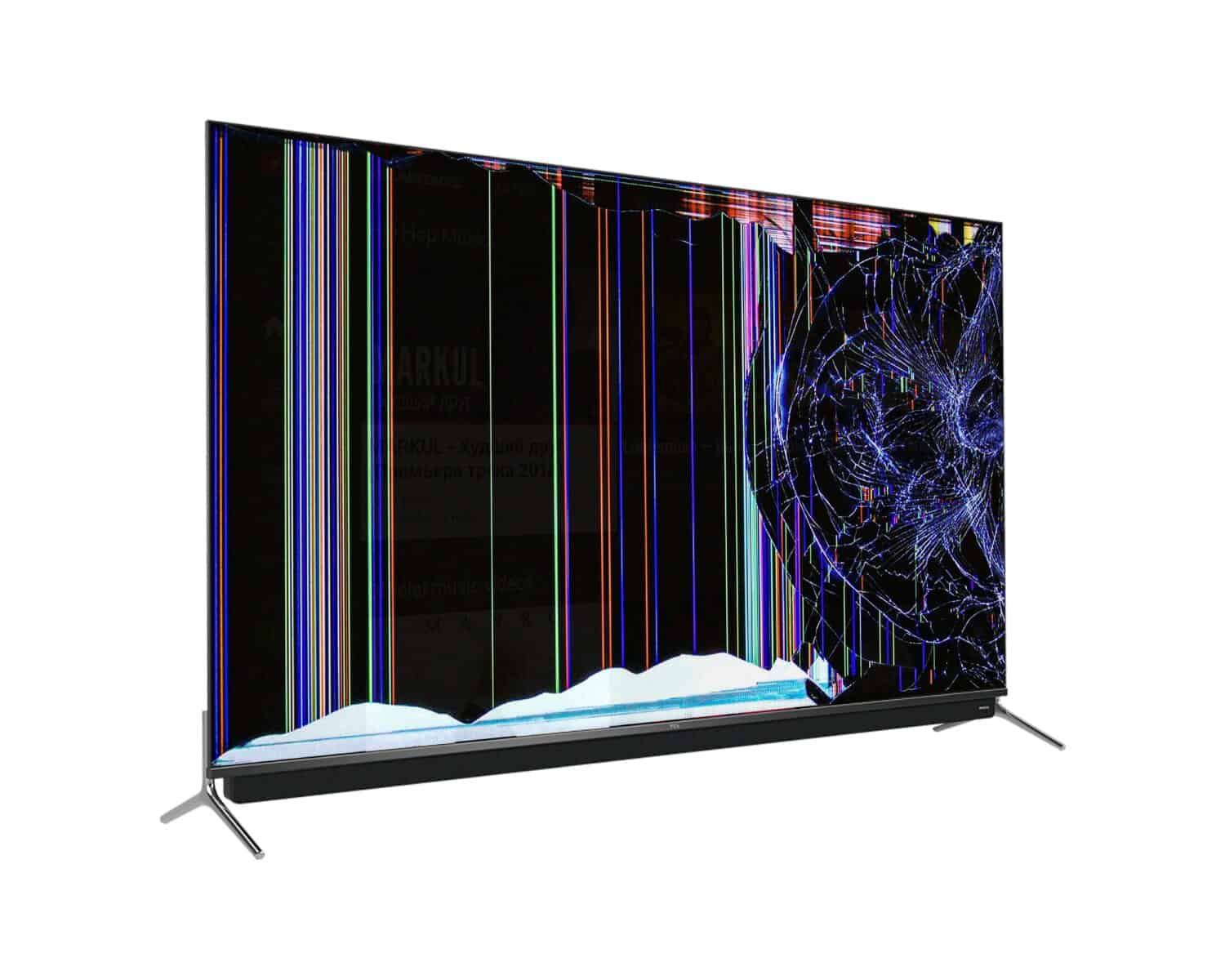Introduction
LED TVs have become a staple in modern households, providing a superior viewing experience with their vibrant colors and sleek designs. However, like any electronic device, LED TVs are susceptible to issues that may require repair.
Whether it’s a cracked screen, faulty backlight, or audio/video problems, encountering a TV malfunction can be frustrating. The question that often arises is, “How much would it cost to repair an LED TV?”
The cost of LED TV repair can vary depending on various factors. In this article, we will explore the different factors that can affect the repair cost, common problems and their estimated costs, and whether DIY repair or professional assistance is the better choice.
Understanding the potential costs associated with LED TV repair can help you make an informed decision and ensure that you choose the most suitable option for your specific situation.
Let’s delve into the various factors that can influence the cost of repairing an LED TV.
Factors that can affect the cost of LED TV repair
Several factors come into play when determining the cost of repairing an LED TV. Understanding these factors can give you a better idea of what to expect when seeking professional assistance or embarking on a do-it-yourself (DIY) repair.
1. Size and brand of the TV: The size and brand of the LED TV can significantly impact the repair cost. Larger TVs generally require more expensive replacement parts, while certain brands may have higher prices for their components.
2. Type and complexity of the issue: The type and complexity of the problem will also affect the repair cost. Some issues, such as a cracked screen or faulty backlight, may require expensive replacement parts, while others, like minor audio or video problems, can often be resolved relatively inexpensively.
3. Labor costs: The cost of labor is another crucial factor to consider. Repair professionals typically charge based on their expertise, experience, and location. Expect labor costs to vary between service providers.
4. Warranty coverage: If your LED TV is still under warranty, the repair cost may be significantly reduced or even covered entirely. It’s essential to check the terms of your warranty and understand what repairs are eligible for coverage.
5. Availability of replacement parts: The availability of replacement parts can impact the repair cost. If a particular component or part is difficult to find or has been discontinued, it may need to be sourced from a specialized supplier, possibly increasing the overall repair cost.
6. Geographical location: Repair costs can also vary based on your geographical location. In areas with a high cost of living, repair services may be more expensive compared to regions with lower overheads.
7. DIY vs. professional repair: Lastly, the decision to attempt a DIY repair or seek professional help can influence the cost. DIY repairs may be more affordable initially, but mistakes can lead to further damage and potentially increase the overall cost in the long run.
Understanding these factors will give you a better idea of the potential cost involved in repairing your LED TV. Next, we will explore common problems that LED TVs often encounter and their estimated costs.
Common problems and their estimated costs
LED TVs can experience a range of issues that may require professional repair. Understanding the common problems and their estimated costs can help you assess the potential expenses associated with fixing your TV.
1. Cracked screen: A cracked screen is a common problem that can be costly to repair. Replacing the screen is a labor-intensive process that involves carefully removing the old screen and installing a new one. The cost of a replacement screen can vary widely based on the size and brand of the TV, ranging from $200 to $1000 or more.
2. Faulty backlight: If your LED TV has a dim or flickering display, the backlight may be the culprit. Repairing or replacing a faulty backlight can cost around $150 to $300, depending on the TV’s size and model.
3. Audio and video issues: Problems with sound or picture quality can be caused by various factors, such as faulty speakers or video processing components. The cost of repairing audio and video issues can range from $100 to $300, depending on the complexity of the problem and the necessary replacement parts.
4. Power supply problems: Issues with the power supply can prevent your LED TV from turning on or cause intermittent power failures. Repairing the power supply board can cost approximately $100 to $200, excluding any additional labor charges.
5. Other miscellaneous problems: LED TVs can encounter various other issues, such as HDMI port failures, remote control problems, or software glitches. The costs for repairing these miscellaneous problems can range from $50 to $200, depending on the specific nature of the issue.
Keep in mind that these estimations are just general guidelines and can vary depending on various factors, including the size and brand of your TV, the availability of replacement parts, and labor costs in your area. It is recommended to consult with a professional repair service for an accurate assessment and cost estimate based on your specific TV and problem.
Now that we have explored common problems and their estimated costs, let’s delve into specific repair scenarios, starting with fixing a cracked screen.
Fixing a cracked screen
A cracked screen is a common and unfortunate issue that many LED TV owners may encounter. This problem not only affects the viewing experience but also poses potential risks, as the cracks can spread over time or cause further damage to the internal components of the TV.
Fixing a cracked screen is a complex and delicate process that requires specialized tools and expertise. It is generally recommended to seek professional assistance for this repair, as attempting a DIY fix can result in further damage or even render the television irreparable.
The cost of fixing a cracked screen can vary significantly depending on the size and brand of your TV. Smaller screens may be more affordable to repair, while larger screens can be considerably more expensive. On average, the cost of replacing a cracked screen can range from $200 to $1000 or more.
When you opt for a professional repair service, they will typically assess the extent of the damage and source a replacement screen that matches the specifications of your TV. The actual repair process involves carefully disassembling the TV, removing the broken screen and its components, and installing the new screen with precision. This requires technical skill and attention to detail to ensure a seamless and functional repair.
It’s essential to keep in mind that the cost of the replacement screen is a significant portion of the overall repair expense. Additionally, the labor cost for this repair can be higher due to the time and expertise involved in the process.
Remember, attempting a DIY screen replacement can be risky. Without the proper tools, knowledge, and experience, you may cause further damage or compromise the quality of the repair. It is highly recommended to consult a professional technician who specializes in LED TV repairs to ensure the best possible outcome.
Now that we have examined the repair process for a cracked screen, let’s move on to another common issue: replacing a faulty backlight.
Replacing a faulty backlight
A faulty backlight is a common issue that can impact the visual quality and brightness of an LED TV. The backlight is responsible for illuminating the screen and creating the vibrant colors that we see. When it malfunctions, it can result in a dim or flickering display.
Replacing a faulty backlight requires technical expertise and specialized tools. It is recommended to seek professional assistance for this repair, as it involves delicate procedures and can be challenging for inexperienced individuals.
The cost of replacing a faulty backlight can vary depending on the size and model of your TV. Typically, the cost of the replacement backlight ranges from $50 to $150. However, labor costs may vary based on the complexity of the repair and the service provider you choose.
During the repair process, the technician will carefully disassemble the TV to access the backlight assembly. The faulty backlight components will be removed and replaced with new ones. It is important to ensure the replacement backlight matches the specifications and requirements of your TV to ensure optimal performance and compatibility.
Once the new backlight is installed, the TV will be reassembled and tested to ensure that the display is functioning correctly. The technician may also make adjustments to the brightness and color settings to ensure optimal visual quality.
While replacing a faulty backlight is a relatively common repair, it is not a task that should be undertaken by amateurs. Without the necessary knowledge and experience, you risk damaging the TV or encountering further issues down the line.
Professional repair services have the expertise and tools to handle backlight replacements with precision and care. They can ensure that the repair is completed correctly and help you avoid unnecessary complications.
Now that we have explored the process of replacing a faulty backlight, let’s move on to the next section where we will discuss audio and video issues and their potential costs.
Repairing audio and video issues
Audio and video issues are common problems that LED TVs can experience. These issues can range from distorted sound or no audio at all to blurry or pixelated video playback. Understanding the potential causes and costs associated with repairing these issues can guide you in seeking the appropriate solution.
The first step in repairing audio and video problems is to determine the source of the issue. Faulty speakers, HDMI ports, video processing components, or software glitches can all contribute to audio and video malfunctions.
The cost of repairing audio and video problems can vary depending on the complexity of the issue and the necessary replacement parts. In general, the estimated cost for these repairs ranges from $100 to $300.
For audio issues, the repair technician will diagnose whether the problem lies with the speakers, audio circuitry, or audio processing components. Replacing speakers can be relatively affordable, while repairing or replacing audio circuitry or processing components can be more expensive.
Video issues may require troubleshooting and component replacement. Blur or pixelation in the display may be resolved by replacing faulty video processing components. HDMI port failures may necessitate replacing the port itself or addressing underlying circuitry issues.
Software glitches can sometimes be resolved through a firmware update or resetting the TV’s settings. However, if the issue persists, it may require further investigations and repairs by a professional.
It’s important to note that the cost of spare parts and labor can vary between service providers and may also depend on the specific make and model of your TV. Consulting with a reputable repair service will provide a more accurate assessment of the exact costs involved in resolving your audio and video issues.
While some audio and video problems may seem minor, it is advisable to seek professional assistance. Attempting DIY repairs without the necessary knowledge and experience can lead to further damage or may not fully resolve the underlying issue. Professional technicians have the expertise to diagnose and repair these problems effectively and safely.
Now that we have explored audio and video issues, let’s move on to the next section where we will discuss power supply problems and the associated costs.
Dealing with power supply problems
Power supply problems are a common issue that can prevent LED TVs from turning on or cause intermittent power failures. These issues can be frustrating, but they are often fixable with the right expertise. Let’s explore how power supply problems can be addressed and the associated costs.
When encountering power supply problems, it is important to first determine whether the issue lies with the TV itself or with the power source. Checking the power outlet and trying a different power cord can help identify the source of the problem.
If the power supply within the TV is faulty, it may need to be repaired or replaced. The cost of fixing power supply problems can range from $100 to $200, excluding any additional labor charges. The actual cost may vary depending on the specific make and model of your TV and the service provider you choose.
Repairing the power supply typically involves identifying the faulty components, such as capacitors or transformers, and replacing them with new ones. This repair requires technical expertise and should be done by a professional technician to ensure the safety and functionality of your TV.
In some cases, power supply issues may be related to internal wiring problems or issues with the main circuit board. These repairs can be more complex and may require additional time and expertise, potentially increasing the overall cost.
It’s important to address power supply problems promptly to avoid further damage to your TV or potential safety hazards. Professionals experienced in TV repairs can thoroughly diagnose the issue, provide an accurate assessment of the repairs needed, and ensure that your TV functions properly and safely.
Attempting DIY repairs for power supply problems is not recommended, as it involves working with high voltages and delicate components. Incorrect repairs can lead to further damage or pose a risk of electrical shock.
If you are experiencing power supply issues with your LED TV, it is best to consult a professional repair service. They will have the expertise and equipment to diagnose and resolve the problem effectively, minimizing both inconvenience and potential hazards.
Now that we have explored power supply problems and their associated costs, let’s move on to discuss the overall cost considerations of LED TV repairs, including parts and labor.
Cost of parts and labor
When it comes to LED TV repairs, the cost is determined by two main factors: the cost of replacement parts and the cost of labor. Understanding these cost components can help you budget and make informed decisions when seeking professional repair services.
The cost of replacement parts can vary depending on the specific make and model of your TV and the availability of the required components. A cracked screen, faulty backlight, or malfunctioning audio and video components are examples of repairs that may require expensive replacement parts.
The cost of replacement parts typically ranges from $50 for smaller components to several hundred dollars for major parts, such as screens or main circuit boards. Higher-end or less common TV models may have more expensive replacement parts due to limited availability or specialized manufacturing processes.
Labor costs vary based on the expertise and reputation of the repair service, as well as the complexity of the repair. Technicians typically charge fees for their time, which can range from $50 to $150 per hour.
Keep in mind that labor costs may also depend on the geographical location and the repair service’s overhead expenses. Repair turnaround time and additional services, such as diagnostics and cleaning, may also be factored into the labor cost.
It is important to obtain a detailed cost estimate from the repair service before proceeding with any repairs. They should provide a breakdown of the estimated costs for replacement parts and labor, giving you a clear picture of the total expense.
It is worth noting that the cost of parts and labor may differ significantly between professional repair services and do-it-yourself (DIY) options. While DIY repairs may initially seem more affordable, the risk of further damage or improper repairs can lead to higher costs in the long run.
For those who are skilled and knowledgeable in electronics repair, DIY repairs can be a cost-effective alternative. However, it is important to consider the complexity and potential risks involved. DIY repairs are generally recommended for smaller, simpler issues that can be easily addressed with readily available parts and basic tools.
Ultimately, the choice between professional repair and DIY repairs depends on your comfort level, expertise, and the complexity of the repair. Seeking professional assistance ensures that the repair is done properly, minimizing the risk of further damage and maximizing the lifespan of your TV.
Now that we have discussed the cost of parts and labor, let’s delve into the pros and cons of DIY repair compared to professional assistance.
DIY vs. professional repair
When faced with a malfunctioning LED TV, you have the choice to either attempt a do-it-yourself (DIY) repair or seek professional assistance. Both options have their pros and cons, so it’s important to consider various factors before making a decision.
DIY repair: Opting for a DIY repair can be a cost-effective solution, especially for minor issues that require simple fixes. Here are some advantages of DIY repair:
- Cost-saving: DIY repairs can save you money on labor costs, as you’ll be doing the repairs yourself.
- Learning experience: Engaging in DIY repair can provide valuable knowledge and skills that might come in handy for future repairs.
- Convenience: DIY repairs can be done at your own pace and schedule, without the need to wait for an appointment or rely on external help.
However, there are some downsides to consider as well:
- Complexity: Some repairs require specialized tools, technical knowledge, and expertise that the average person may not possess.
- Risk of further damage: Without proper understanding or experience, DIY repairs can potentially result in additional damage to your TV or render it irreparable.
- No warranty coverage: If you attempt a DIY repair, it may void any existing warranty on your television.
Professional repair: Seeking professional assistance for LED TV repair offers several advantages:
- Expertise: Professional technicians have the knowledge, experience, and specialized tools to accurately diagnose and repair the issue.
- Quality guarantee: Reputable repair services often provide a warranty on their work, giving you peace of mind in case any issues arise after the repair.
- Time-saving: Professionals can efficiently complete the repair, minimizing downtime and ensuring a swift resolution.
However, there are a few drawbacks to professional repair:
- Higher cost: Professional repairs typically involve labor costs and may require purchasing expensive replacement parts.
- Dependency: You may need to wait for an available appointment or rely on the repair service’s schedule.
Ultimately, the right choice between DIY and professional repair depends on factors such as your level of expertise, the complexity of the issue, and your comfort level with undertaking the repair yourself.
If you have the necessary knowledge and skills, a DIY repair may be suitable for minor, straightforward issues. However, for more complex problems or when in doubt, it is generally recommended to seek professional assistance. Professionals can ensure a proper and efficient repair, minimizing the risk of further damage and maximizing the lifespan of your LED TV.
Now that we have explored DIY and professional repair options, let’s conclude with a recap of the key points discussed in this article.
Conclusion
LED TVs have become an integral part of our modern lives, providing us with captivating entertainment experiences. However, like any electronic device, they are prone to issues that may require repair. Understanding the factors that can affect the cost of LED TV repair, such as size, brand, and complexity of the problem, can help you navigate the process more effectively.
Common problems like cracked screens, faulty backlights, audio and video issues, and power supply problems can all impact the performance of your TV. The cost of repairs can vary depending on the specific issue and the necessary replacement parts. Labor costs, availability of replacement parts, and geographical location are other crucial factors to consider.
While some repairs may be feasible for DIY enthusiasts, like replacing minor components or resetting settings, it is essential to be cautious. More complex repairs, such as fixing a cracked screen or replacing a faulty backlight, are best left in the hands of professional technicians to ensure optimal outcomes and minimize risks.
Professional repair services provide expertise, warranties, and peace of mind. They have the knowledge and tools to address various issues and ensure the longevity of your TV. However, it’s important to weigh the costs associated with professional repairs against the convenience of DIY repairs for minor or straightforward problems.
Ultimately, the choice between DIY and professional repair depends on your level of expertise, the complexity of the issue, and your personal circumstances. Seeking professional assistance for LED TV repairs is recommended for ensuring quality repairs and avoiding further damage.
Remember to consult with a reliable repair service, obtain detailed cost estimates, and consider the warranty coverage of your TV before making any repair decisions. By assessing these factors, you can make an informed choice that best suits your needs and budget.
Now armed with this knowledge, we hope you can confidently navigate the world of LED TV repairs and enjoy uninterrupted entertainment for years to come.







